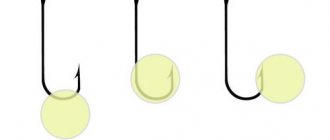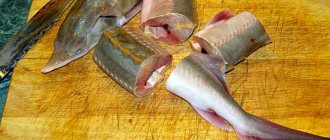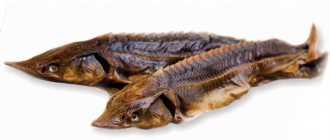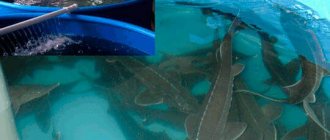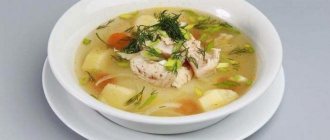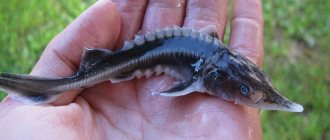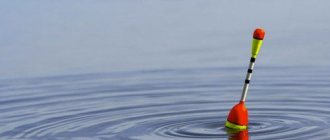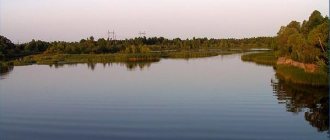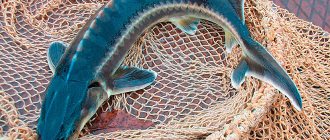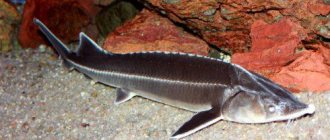Sterlet fishing today is no longer distinguished by the massive scale and production that it was famous for a century ago, when fishermen were engaged in this fishery on almost all the major rivers of our huge country. Serious deterioration of the ecological situation caused by increased human activity in the industrial and chemical spheres has led to a strong reduction in the number of this fish, as well as, in principle, all other sturgeon species that are sensitive to water purity. Today, sterlet has become a rare trophy among fishermen, and not in all parts of the country one can hope for success.
Due to the small population, this species of sturgeon is listed in the country's Red Book . Sterlet is carefully protected by the state, which regulates the removal of fish from natural bodies of water by issuing special permits for commercial fishing. But still, the fisherman, in addition to the option of obtaining a license, has an easier way to enjoy sterlet fishing by fishing on paid ponds, the number of which is increasing every year. Fishing strategies for all sturgeon species have their own characteristics, and sterlet fishing is no exception.
It is in this direction that we will lead our conversation, focusing not only on fishing gear and hunting tactics, but also on issues of legitimate fishing without violating the laws of the country.
What kind of fish is sterlet
Sterlet, like its more famous relative sturgeon, are valuable commercial fish species. In addition to the excellent taste of the meat of this breed, the delicious black caviar, which is no longer so often seen in sales, is of great value. A bright representative of sturgeon breeds leads a school lifestyle. The fish reaches sexual maturity late. For example, males go out to spawn for the first time at 4–5 years, and females even longer, becoming ready to spawn no earlier than 6–8 years.
The fish in its sturgeon genus is not distinguished by its huge dimensions. Living up to 30 years in the wild, the sterlet can grow up to one and a half meters and weigh 15–20 kg, which, of course, is not comparable to some giant relatives such as the beluga. Such individuals practically never make it into catches, and most often the fisherman is content with catching specimens measuring 50–70 cm and weighing 2–3 kg.
The fish has a typical sturgeon body structure, familiar even to the average person, with an elongated, sharp head ending in a mustache and a mouth adapted for collecting food from the bottom. There are no scales on the body of the sterlet, but there are bone growths located in rows along the entire body of the fish. In the classics, the color of the fish is brown on the back, with a whitish belly that turns yellow and gray fins, but in nature the fish has many shades of these primary colors, which depends on the habitat and the color of the bottom. In the cold winter period of the year, the sterlet loses activity, falling into semi-anabiosis, and catching sterlet is mostly possible in open water and is especially effective in the warm period of the year.
Sterlet: description and behavioral characteristics
Sterlet is part of the sturgeon family. But if you compare it with sturgeon, it is small in size.
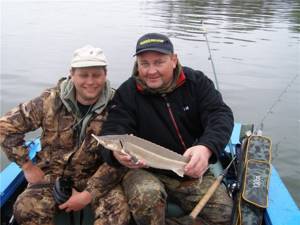
External characteristics:
- The adult has a long nose with a sharp tip and short antennae that reach all the way to the mouth.
- The surface of the body is not covered with scales. There are brushes on the surface - bone growths. They are located in parallel rows along the entire body. There are 5 rows in total - 1 row is located along the entire back, 2 rows on the sides and 2 along the entire belly.
- Between the rows of scutes there are growths of bone plaques.
- Interestingly, on the surface of the wall the brushes close tightly, and thereby form sharp shields.
- The color of individuals can be different, this is influenced by environmental conditions. The most common individuals are those whose back is brown with a gray tint, and their abdomen is pale yellow. The fins are gray in color, and the shields on the sides are light shades.
- There are species with a blunt nose. These individuals are mainly distributed in lakes.
- The length of an adult fish is from 50 to 60 cm, and the weight is from 1.5 to 2 kg. Sometimes there are large species, the maximum length of the fish can reach 100-125 cm, and weight up to 16.
Features of behavior:
- Nutrition. Individuals eat mainly invertebrate inhabitants - worms, insects, larvae, crustaceans. Sometimes they can eat the eggs of other fish.
- Reproduction. Has very early puberty. The female can already breed at the age of 5 to 8 years, and the males at the age of 4 to 5 years.
- The spawning period begins in April and lasts until the first days of June. Each female lays from 15 to 20 thousand eggs. The temperature during spawning should be from 12 to 17 degrees.
- Peculiarities of behavior during feeding. Usually in the evening or at night it begins to rise to the top of the water and begins to hunt. Individuals roll over onto their backs and catch insects with their mouths. With the onset of dawn, it swims into deep places and lives there until dusk.
- Features of lifestyle. She leads a cautious, calm and secretive life. Therefore, it lives at great depths.
- During the winter season, it swims in deep places and hibernates.
Where is the sterlet found?
At the moment, the population of this sturgeon species can be found in the basins of the Black, Caspian, Azov, Barents, White and Kara seas. They are largest in number in rivers such as the Volga, Irtysh, Yenisei and Ob. You can successfully catch sterlet on the Kuban River, as well as in some rivers of the Altai Mountains. The sterlet, unlike other sturgeon species, lives exclusively in fresh water and does not stay near the confluence of rivers into the sea. Fish is sensitive to water purity, does not tolerate pollution and needs constant and high oxygen saturation.
It inhabits sections of rivers with strong currents on hard soils made of clay and compressed sandy sediments, and inhabits pebbles and shell banks. The fish avoids muddy and algae-covered areas of water areas with low currents, and it is completely useless to look for them there.
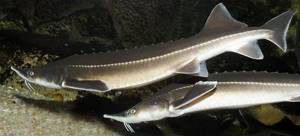
Important! The fish leads a bottom-dwelling lifestyle, staying in deep holes and channel ditches.
It feeds on the ground, looking for it on the edges of bottom anomalies, and in rare cases going to the shallows. During the spawning season, it rises upstream, where it spawns in the deep places of small rivers, laying 100–150 thousand eggs per female. In late autumn, before freeze-up, it rolls into riverbed wintering pits and loses feeding activity, making the period for fishing unproductive at this time.
Where to look?
As mentioned above, in the fall sterlet is drawn to the deepest places in the reservoir. Therefore, it is necessary to know the fishing zone in order to imagine where exactly the probability of meeting this fish is maximum. For example, if on a section of a river about two kilometers long there are two holes: one large, extended with a depth of 10–12 meters, the second local, no more than 8 meters, then in the first the concentration of this representative of sturgeon will be greater. This does not mean that there will be no bites in a limited depth, but their number will be significantly less.
During the year, sterlet avoids the soft muddy bottom. Autumn is no exception. It is advisable to look for it on a sandy, pebble, rocky, or less often clay structure. Fish can also be found in areas strewn with shell rock.
Within a specific pit, sterlet likes to stay in the following zones:
- At the entrance and exit. Fish like to swarm around in dumps, where the current brings a lot of food.
- Side bevels and edges. Sterlet loves sudden changes in depth. A lot of food is retained here, which is driven to the ground by the pressure current.
- Local tubercles where channel flow eddies are formed.
- Individual flooded tree trunks or snags. There is also always plenty of food and shelter where you can rest.
On warm autumn days, sterlet can go to the shallows closest to the pits. More often this happens at dawn or at night, when fishing is prohibited.
Sterlet biting calendar
Successful sterlet fishing depends on the season of the year. Although the fish is not a heat-loving species, it is quite dependent on water temperature, which affects its basic vital functions. March is considered the opening of the sterlet fishing season, or more precisely, the time when the ice melts from the reservoir. As the waters warm up, the fish begin to become more active, preparing for the upcoming spawning, regaining their lost strength over the winter. In spring, flocks often approach the shores, where fishing can be done with a regular float rod. Captures are not as frequent, but still occur throughout the daylight hours. In May, the spawning period begins, when the population suddenly stops feeding, migrating to the spawning areas.
| January | February | March | April | May | June |
| — | — | + | ++ | — | + |
| July | August | September | October | November | December |
| +++ | +++ | ++ | + | — | — |
The non-biting period lasts until the beginning, or even mid-June, after which the most productive season for production begins. In the summer, when the water temperature stabilizes, the fish begin to feed intensively and plentifully throughout the day, including their night part. Sterlet pecks in summer around the clock. The daily peak of the bite occurs in the early morning hours and at sunset.
Important! There is a periodicity in the intensity of the bite, the so-called exits, the time of which at certain points does not change throughout the season.
With the onset of autumn cold weather, fish break away from the boundaries at changes in depth and go to wintering pits. Now you should expect bites during daylight hours, looking for schools directly in the pits. Strategies for this kind of fishing are justified until ice is established on the reservoir, after which the prospects for hunting are reduced to zero until the next spring flood.
Tactics and fishing techniques
Fishing for sterlet fish begins already in March and successfully continues until the end of November, until the reservoirs are covered with ice, but the best time is: before and after spawning, the moment of cold weather in August and the stage of sliding into wintering pits.
Almost all methods of catching sterlet are aimed at catching several individuals, since when one fish is found, there is a high probability of catching other individuals from the flock. The prey feeds throughout the day, but at outlets, that is, if there are no bites for a long time, it is not at all necessary to change the place of fishing.
Read more
How to catch a chub using a grasshopper?
Catching sterlet with a fishing rod and float is possible only in the spring, when it approaches the shore. It’s better not to rely on one tackle and cast several rods at once, preferring donks.
Successful fishing tactics:
- We determine the presence of deep holes at the bottom.
- We throw the donk on one side to the exit from the pit, also install the tackle on the second side and throw it in the center.
- When we find a snag, be sure to cast the tackle closer to it.
The best bite is at night and in the morning. During the day and evening, activity decreases slightly; now we recommend experimenting with the length of the leash. Bait is not mandatory, but if one fish finds an area with an abundance of food, a school is likely to swim there.

Only in spring it is possible to catch sterlet using a fishing rod with a float.
Catching sterlet using various tackles
Catching sterlet is not an easy process, due to the specificity of its habitat and the behavior of the fish itself. Secretive and sensitive to suspicious noises, the sterlet stays at long distances in the reservoir, at considerable depths near the very bottom. In addition to these factors, the organization of fishing in strong currents makes fishing more difficult. The first priority for the fisherman is to find a promising fishing spot, focusing on differences in bottom levels in the deepest holes and ditches. In certain cases, a floating device will be required to ensure successful fishing.

Fishing from the shore is carried out in places convenient for casting, since without long-range gear it is often not possible to get a trophy. In practice, many fishing methods are applicable, including float rigs, catching fish with a spinning rod, as well as unconventional and, so to speak, endemic methods inherent in a certain territorial region. But still, more significant and confident results are brought by bottom fishing, which closely corresponds to the specifics of the habitat and the feeding method of the trophy. Fishing for sterlet on donka is popular in all regions where this fish is caught, and can be carried out in several directions, specifically about which, as well as about other hunting methods, the reader will learn from the continuation of the article.
How to catch sterlet on donka
The simplest and most accessible bottom tackle is a zakidushka, assembled on a wooden reel or on a spinning rod. Heavy spinning rods over three meters long are suitable for casting, guaranteeing long casts of massive loads that help hold the bait in strong currents. The structure of the form must correspond to the medium or fast type, which gives sufficient information to the installed gear. The spinning rod is equipped with an inertial or power inertialess reel with a friction brake and preferably a baitrunner, which will save the tackle from floaters in the form of algae or a floating branch or small log.

The reel is equipped with a 0.2 mm braided cord, at the end of which a flat lead weight is placed and a fluorocarbon leash with a hook is attached. A leash 0.25-0.3 mm thick and 30–50 cm long is sufficient to ensure fishing conditions. The zakidushka is placed on the shore, on a flyer, equipped with an audible alarm. It is effective to use several hooks at once, increasing the likelihood of a bite, especially when a school of fish approaches the feeding zone.
A feeder rod allows you to catch sterlet on a donk in a more modern way. Heavy feeders, similar to carp fishing rods, are suitable for this type of fishing. Their use is not particularly related to the power of the caught fish and its resistance when playing. Rather, the increased carrying capacity makes the tackle suitable for fishing in strong currents at great depths and long distances. Like the rod itself, the spinning rod is installed in a reinforced version with a baitrunner and a finely tuned clutch, with a spool size of 4500–5000 units.
Feeder installation is an asymmetrical loop, a more suitable option for equipment. The weights are heavy mesh rectangular feeders filled with chopped worms, the mass of which reliably anchors the tackle thrown into the water. A braided cord of 0.18-0.20 mm is used as a basis. The leaders are 0.2 mm fluorocarbon, which copes with the problems of fishing on shell rocks and pebbles, having the best abrasion resistance. The installation ends with a hook with a long shank, number 8–10.
On a float rod
You can catch sterlet with a fishing rod starting in the spring, when the fish approaches the coastlines, and if you have a boat, you can use float rigs throughout the productive season of open water. For equipment, fly rods, match rods and Bolognese rods are selected. Sterlet is calm when fishing and for fishing, the angler does not need a powerful rod with a large margin of safety. Forms are selected depending on the fishing distance, allowing you to comfortably deliver the bait to the hunting point. For easy storage of fishing line, the fishing rods are equipped with an inertial reel with a supply of monofilament fishing line with a thickness of 0.2-0.3 mm.
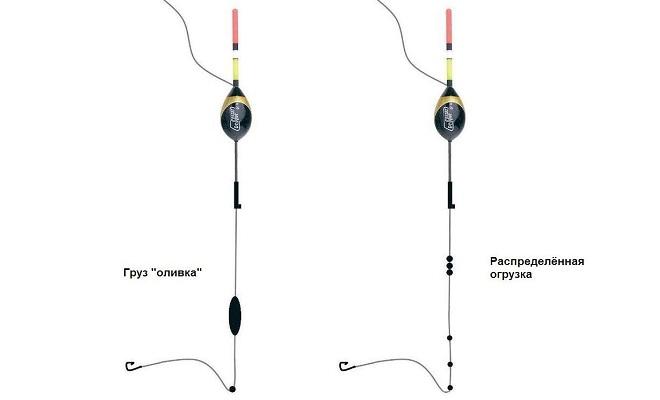
The float installation consists of a sliding spindle-shaped float with a high, visible antenna on the water and weights and pellets spaced along the fishing line to balance the signaling device. The bait is placed on the bottom, pressing with the required weight of the underlayment. The line leash is equipped with a thin hook number 10–12. The fishing method allows the equipment to be dragged along the bottom, which attracts the sterlet and forces it to pick up the bait it carries. Bait is not effective in fast currents, so in most cases it is not used at all for catching sterlet.
Spinning
Spinning tackle for sterlet is used in the autumn, when flocks migrate to wintering pits and the water level drops significantly. Heavy spinning rods are used for fishing the edges of holes, using a uniform and slow pull of bait of animal origin along the bottom of the reservoir with a loaded cord. The spinning rod is equipped with a spinning reel of 3500–4000 units, with a friction brake. 100 meters of braided cord with a diameter of 0.15-0.18 mm are wound into the spool. At the end of the installation, a sinker is mounted, which allows its mass to stably hold the monofilament leash with a hook and nozzle at the very bottom. If there is any interference with the wiring, you should immediately make a sharp hook, spotting the fish trying the bait.
Another way of fishing

The universal and seemingly irreplaceable donka for sterlet is being replaced in many regions of our country by its local tackle, which has been used in catching the trophy for centuries. For example, during the period of mass emergence, mayflies use such gear as a tug. Leashes equipped with hooks with bait are placed on the cord and pulled across the surface of the water. The bait glides across the surface, attracting fish from the depths. The method is applicable on narrow rivers, but to implement it you will need a partner. This type of fishing is not considered poaching.
Where is the best place to fish?
Determining where to fish is one of the first and fundamental steps to a rich catch, but finding it is not very easy. Fishermen who regularly catch sterlet quickly occupy a good place.
From season to season, they go to the same places closer to the base part of the river, or are located in the narrowest channels where there is a current. Of course, there is no specific description of the place where a huge catch could be.
Depending on many climatic factors, fish can be caught in different places in the reservoir. Therefore, it is necessary to rely on the advice of experienced fishermen.
Criteria for choosing gear
The criteria for choosing an effective type of gear for catching sterlet directly depend on the hunting season. Despite the fact that donks satisfy most fishing conditions, it is worth taking into account the fact that with the beginning of spring, during periods of floods and river floods, schools of fish can move from deep sections of rivers, approaching heated shallows, where the availability of nutritious objects is much higher than still in cold waters. During this period, having scouted the trajectories of a school of sterlet, it is quite possible to have good catches using classic rods with float rigs.
With the beginning of the flight of insects, which coincides with the end of sterlet spawning, especially on small rivers, fishing with surface baits using the drag technique is productive. Throughout the summer, feeders and casting for sterlet will be out of competition compared to other fishing gear. This type of bottom equipment allows you to accurately deliver bait to the intended zones, at the boundaries of the transition from shallows to depths at long distances from shorelines, without particularly disturbing the sensitive sterlet with boats and their motors.
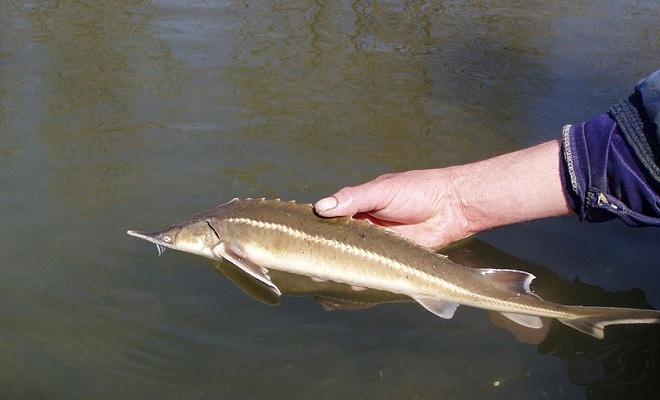
As we have already noted, when the fish retreat to the pits in the fall, you can try spinning fishing with a moving bait. Despite the freeze-up, having information on the presence of fish in a particular hole, attempts to catch sterlet in the winter can be successful, especially when times of strong thaw come with water flowing into the holes. From the ice, directly above the hole, they place a stand in anticipation of the selection of bait by the active individual of the intended trophy.
Habitats and fishing calendar
This species is widespread in the rivers of the basins of such seas as the Black, Azov, Caspian, White, Barents and Kara. Distributed in large numbers in the Volga basin, mainly in the middle and lower reaches.
It also lives in Tvertsa and Lake Seliger, is present in the Oka to Orel, in the Moscow River, Kama, Vyatka and other rivers of the Volga basin. At the beginning of the 19th century, through canals it penetrated into the Northern Dvina basin, into the basins of Lakes Ladoga and Onega.
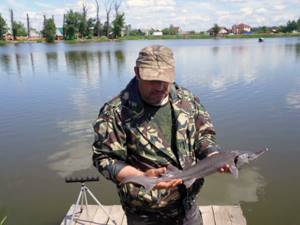
It is also acclimatized to the Western Dvina and Pechora. It is found in small quantities in the Kara, Ob, Irtysh and Yenisei. In the Dnieper basin: in the Smolensk region - the Dnieper River and the Bryansk region - the Desna River. In the Don River basin, it is found throughout its entire length from the Rostov to Tula regions.
In the Kuban basin it is found in the Krasnodar Territory. In the Ural basin it is observed within the Orenburg region. Outside Russia, it is present in the basins of the Dnieper, Prut, Bug and Danube rivers.
Features of the places:
- Since it is secretive in nature, it swims in rivers with great depths, and prefers to crawl along the bottom.
- With the onset of darkness it floats to the upper layers of the reservoir. During this period it hunts insects.
- Prefers to swim in rivers where there is a high current speed. It also prefers clean and cool water.
- Also her favorite places are where there are a lot of branches and sand.
- In summer it often lives near the banks of water bodies.
Biting calendar
In order for the catch to be effective, you should consider the characteristics of fishing by season:
- Since the sterlet is characterized by a schooling lifestyle, it swims only in schools almost the entire year. She is rarely seen alone.
- During the winter season it hibernates. It lives in remote corners of the current with a depth of up to 25 meters. Very often it is stationary and lives in large depressions in several rows. At this time it is difficult to fish it out with a hook.
- At the beginning of the spring season and until the end of the autumn period, individuals prefer places with warm waters and rush to the upper reaches of rivers. Therefore, at this time it is necessary to catch it in the deepest layers of the reservoir.
What to catch sterlet with
Under natural conditions, all species of sturgeon prefer to feed on animal feed. The sterlet is no exception in their list, collecting from the bottom various zooplankton, insect larvae, aquatic worms and beetles, small crustaceans and molluscs, not disdaining the destruction of other people's spawning nests, happily eating fish eggs. The emergence of the mayfly does not go unnoticed by the fish. Despite its natural tendency to feed from the bottom, the sterlet manages to rise to the surface and, turning belly up, masterfully and quite deftly collects insects that have fallen on the water.
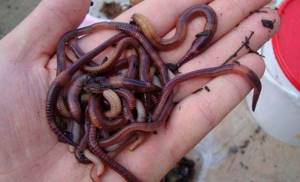
Bait for sterlet will not become something exotic for the fisherman. The best bait option is the familiar dung worm, mounted on a hook either one at a time or in a bunch, so that it is as mobile as possible. It has been noted that the larger the bait, the higher the likelihood of catching a large fish. In addition to worms, maggots and caddis flies are used for hunting, strung on hooks in dense garlands, adding massiveness to the bait. To obtain trophies from the surface of the water, grasshoppers and large bloodworms, as well as dragonflies, are used.
In the spring, smaller baits are placed in the rigs than when forming bait in the autumn, when the fish tends to eat large amounts of food and gain fat for the winter. In habitats where there are colonies of mollusks or crayfish, you can catch sterlet on a donk using their fresh meat.
How to catch sterlet on the river
To make money, the sterlet explores areas bordering on standing water.
In such places, insect larvae, insects and worms escaping from the current settle. You should not look for sterlet in areas where there is no current, as it prefers to stick to areas with current. When visiting the boundaries of fast currents and standing water, the sterlet still adheres to this boundary and does not enter the area of standing water.
The sterlet emerges from the pits only in the mornings, and in the evening it returns to the depths again. When going out onto the shallows, she chooses areas located 40 meters from the shore, or even more.
This is provided that there is an optimal amount of water in the reservoir.
Sterlet prefers to stay in flocks, therefore, having caught one individual, you can safely count on a series of bites. At the same time, you need to very quickly return the bait to the catchable place, otherwise it can quickly leave this place. If a sterlet finds bait lying on the bottom, it will certainly want to swallow it.
They begin to catch sterlet in early spring, and its fishing ends in late autumn. And short leashes with a length of 10 cm are fixed on the main fishing line.
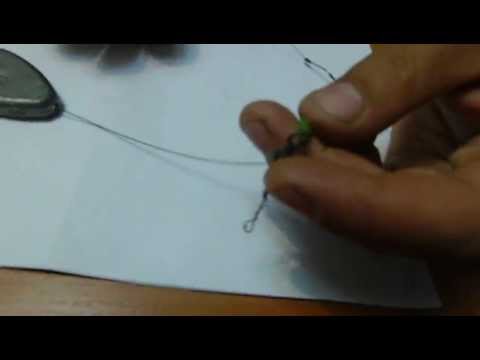
Hooks made of wrought iron or wire are attached to them. Self-catchers are installed against the current mainly in winter or autumn, in deep places in the reservoir.
After a fish hits one of the traps, the others are transferred closer to it. The bait for catching sterlet is maggots or bloodworms.
However, I would like to warn you that fishing for sterlet using aeroplanes is considered illegal, so fishing with such gear is not recommended. As you can see, catching sterlet is an interesting and exciting activity.
But to avoid an unpleasant fishing experience, always remember the rules for catching fish such as sterlet. Today there are many ways to increase your catch.
One of the interesting options is a bite activator. It attracts fish from long distances and stimulates its appetite with the help of pheromones that are included in the composition and influence the behavior of individuals.
Pheromones are natural biologically active substances that are secreted by living organisms, including fish. When hunting for this fish, quite often you will catch pike perch, pike, bream, and white-eye on the hook.
This is explained by the popularity of the packing material. However, if you find a fishing spot and use bottom gear, the angler can count on a good catch.
Catching sterlet on a donk: The first fishing gear was created in the 1920s in England. Ten years later, bite alarms appeared, which became a sensitive extension of bottom gear.
Sterlet fishing: the best tackle, bait and lures
By the behavior of the alarms, fishermen began to judge the nature of the bite. Such steps led to the emergence of modern gear that is designed for bottom fishing for sterlet.
It is important that during the development of such fishing, gear became more improved, which led to the prevention of entanglement when casting. Today, clever bottom equipment is popular among fishermen hunting for sterlet.
Peculiarities of catching sterlet on a donk Since sturgeon aquatic inhabitants are at the stage of extinction, catching sterlet has a number of restrictions. Fishing can only be done with a license.
And since there is at least some chance of catching this type of fish, it makes sense to talk about the peculiarities of fishing. Fishing with bottom gear begins in late spring, when the sterlet has spawned.
Among the effective methods of fishing, catching sterlet on a donk equipped with a rubber shock absorber stands out. When the water begins to warm up in early summer, the fish move closer to the shore in search of food.
This is where you need to be patient after casting a donkey with a rubber band for fishing. At the height of the summer months, sterlet is not attracted to the shores of reservoirs; it moves to deeper areas.
During this period, fishermen equip the donk with a heavier load. This allows you to cast the tackle over a long distance and hold it under fishing conditions in fast currents.
When fishing with a spinning rod with bottom equipment, you need to choose a powerful rod that will not bend when fishing fish out of the water. The tackle is equipped with a leash of no more than 30 cm.
How to catch sterlet - basic nuances
Catching sterlet with a donk, elastic band and hooks, tackle and bait.
And on the contrary, when the water level in the river is low, the sterlet moves further from the shore and settles in holes, waiting until the water level rises and returns to its usual state. In autumn, sterlet does not approach the shore even during high water and tries to stick to the holes all autumn.
But if we generalize, it turns out that the more water and the warmer the weather, the closer to the shore the sterlet stays and is caught. In June, July, early August it can sometimes be caught literally meters from the shore. As the water level drops, the sterlet moves further and further from the shallows to the holes. And already in the fall it stays mainly only in pits.
How to catch sterlet? Tackle and fishing methods
Please also take into account that as the water level drops, the sterlet ends its post-spawning feeding period, and its migratory form is migratory and the local form of sterlet begins to migrate to the lower reaches of the rivers. Gradually, only local sedentary herds of sterlet remain in the upper reaches of the rivers. The further downstream you go, the more and more sterlet there will be.
And here’s what you need to know: What crucian carp bite on in the spring and how to catch it correctly at this time
And since our Siberian rivers all flow north, it turns out that the further north you go, the more sterlet there are. By winter, the sterlet finally determines its wintering place and leaves all small tributaries, only into large rivers.
Accordingly, the larger the river, the more likely and more often there are wintering pits with a depth of 20 meters or more, on which eventually, somewhere in early December, sterlets begin to nest.
But this process cannot be fully called hibernation. Although much less common, sterlet is still caught in the net in winter.
Methods of catching sterlet
And sterlets are caught directly in wintering pits and around them all winter, and even quite well. At this time, she eats almost nothing - she is caught only with nets or by poachers.
Although, it must be assumed, the winter sleep of the sterlet is different from the hibernation of other red fish. The standard Siberian bait is a worm.
Not necessarily big, I fish with both earthen and dung ones. I prefer medium-sized worms.
I dress them entirely, but not with stockings, but pierce them in several places. This keeps the worm tighter on the hook.
The sterlet feeds almost like a carp; most often it swims near the bottom and sucks up food from below with its mouth.
The sterlet's mouth is large and even very large pieces can fit into it. Sterlet is often caught using large crawling worms, pieces of fish or offal.
Discounts for Club members. Problems and Suggestions for the forum.
Problems and Suggestions for www. But in the middle of summer, the fish swim to longer distances from the shore and therefore it is necessary to use a more powerful spinning rod, for example, a carp spinning rod.
It is very important that the bottom gear is in the place of the word. In this case, the fisherman must take into account its possible drift by the river current.
This is due to the fact that sterlet is not very sensitive to pain and does not resist, unlike many other fish. Experienced fishermen know that sterlet is quite unpretentious in choosing bait.
You can use a dung worm or an earthworm. Various combinations of baits have also proven their effectiveness.
Some combinations are focused on achieving a strong odor. Choosing a motor and boat.
How to make a stuffed pike. About zherlitsy and circles.
Most of all, she prefers the riverbed, especially during spawning. Sterlet, as a rule, rarely swims alone, but mostly travels in a flock.
In the summer on the Ob it moves only downstream, but in winter it hides in deep-sea holes. It is very difficult to catch it during floods and floods, since it has much more room for maneuver.
Many fishermen believe that the donka, also known as zakidushka, is probably the best tackle for catching sterlet. Let's consider one of the fishing methods - fishing with a donk.
It is best to catch sterlet with a donkey after spawning. Very rarely does a fisherman come across single specimens.
Feeder Chelyabinsk All about motor boats Fishing places on the Cossack Jerker rod buy in Ekaterinburg
It is often found in fresh water bodies, but only stays in one place in winter. The rest of the time, fishing for sterlet can be somewhat difficult due to the fish’s habit of constantly wandering.
With the onset of spring, this representative of the sturgeon rushes to places where the water is warm. Often these are the upper reaches of rivers.
In the summer, the fish begins to slowly move downstream, gradually approaching the wintering place. Fishing for sterlet in large rivers during this period can be very productive.
The fish feed intensively, since in winter they eat almost nothing. In general, fishing for sterlet in Altai and in the Northern Dvina River basin can result in the capture of a trophy specimen weighing up to thirty to thirty-two kilograms.
At this time, sterlet fishing is carried out only at great depths. In winter, the fish chooses remote corners in the lower reaches of reservoirs, sometimes descending to a depth of twenty-five meters.
During this period it is very difficult to catch it on a hook, so anglers must know what to fish for. OVERNIGHT FISHING AT CATFISH.
In this film I hike on the rocks and admire the views of nature. Along the way, I collect dandelion roots and wild mint.
The menu for the hike includes crumpets, scrambled eggs and dandelion root tea with mint.
Sanskoye - Yushta
Enjoy watching and thanks for your attention! Water transport rights. Full support of the client until receiving the certificate in hand. Attendance at the exam is mandatory. Exams are held at the Yauz reservoir. Mobile version Ad API Help License Agreement News Vacancies About the company.
Since we fish with sports or semi-sports gear, we’ll talk about catching sterlet with them, and not with all kinds of nets and snouts. I spent my entire childhood catching sterlet using tricks.
Of course, there could be no talk of any licenses at that time. Probably, some kind of licenses existed then, although I don’t remember this, where a Soviet person could have had extra money for a license, and where would the money come from the village boys living on the banks of a distant Siberian river.
Moreover, I have not seen such licenses from any adult resident.
And in those days we caught sterlet not for sale or even for food, but what is called “for romance.” Who can resist the temptation to ask their parents for time off and go out at night to sit by the fire, eat baked potatoes with milk and fry on coals, or eat raw sterlet?
And the parents themselves were not averse to tasting the valuable fish brought by their offspring. Maybe because we were village boys and accustomed from birth to the forest and water, but they let us go out at night from the age of ten or twelve, and therefore we were waiting for summer and catching sterlet, although, of course, it was not about fish.
It must be said that the fisheries inspectors were not malicious then either. In the worst case scenario, they confiscated our “tricks” and took away our fish.
What we couldn’t forget about for a long time and wondered: “What did they do with the fish later?” Of course, now I understand what they did with it, since no protocols were drawn up, the fish probably went to someone’s table.
To whom? Let's assume that they went to orphanages... But most often the matter was limited to “cleansing their brains” and asking them to pack up and go home. And the cases of meeting with fish inspectors were quite rare - once every few years.
And here's what you need to know: Catching grass carp with a float rod
The catches in those (I don’t want to say so - distant) times periodically happened to be quite good. In a good bite, two people could catch 10 kg. sterlet for “night”. In addition to sterlet, other fish were also caught along the way: ide, gudgeon, dace, sometimes perch, and, of course, ruff. There was almost no bream then - it was just spreading along the rivers of Siberia.
From time to time, “blues,” as we called kastryukov (fry sturgeon), were also caught in the dumps. In most cases, the pots were released because this was already a serious matter (sturgeon is listed in the Red Book) and a large fine was imposed for it.
In addition, the name “blue” was given to pots for the bluish tint of their belly. The sterlet has a golden or yellow belly and in terms of fat content, and therefore taste, the sterlet is seriously superior to a saucepan of a similar or even larger size.
The training in sterlet fishing began with the older guys teaching you to distinguish a sterlet from a panfish. It is very easy to remember these differences and in the future this was already done automatically, except for the color of the abdomen, the panfish differs from the sterlet by a wider head and, most often, a blunt nose, sharper and larger spines, and long whiskers at the mouth.
Only very large sterlet grow long mustaches.
The picture shows a sterlet (above) and two types of sturgeon (of which, by the way, there are quite a lot and they have quite significant external differences). As you can see, there are subspecies of sturgeon that are almost as sharp-nosed as sterlet. But based on several signs in the complex, it is always easy to distinguish a sterlet from any sturgeon.
As for catching sterlet, this is perhaps the most uninteresting of fishing for donkeys or zakidushki. Why? The adrenaline rush when catching sterlet can only be caused by the sterlet itself, as a desired trophy.
This is due to the fact that sterlet is a rather simple-minded fish that pays little attention to tackle, is not capricious in terms of bait and does not offer much resistance when fishing. The biggest difficulty is finding a feeding place for the sterlet, since it is not caught everywhere. And if you get bitten, the bites follow one after another.
The sterlet is a schooling fish and often one catch would come across 2 or even three sterlets at once. I had a record: I caught five sterlets on all five hooks.
But while fishing, the last sterlet came off the hook literally a meter from the shore. In those days there were a lot of gatherings, since we had almost no hooks.
We used whatever hooks we could get our hands on. I had some odds and ends that I got from my business.
And they were equipped with hooks with a fore-end almost as thick as a match and the overall size of a matchbox, and, moreover, poorly sharpened.
Permit for catching sterlet
Free fishing for sterlet is possible only on a paid reservoir that operates according to its own internal rules. For the rest of the country, fishing is prohibited or limited and is only available if the fisherman has a license . Licenses are issued by local authorities after payment of a certain fee. The size of the fee varies from region to region, as does the amount allowed, even if there are licenses for the volume of fish caught.
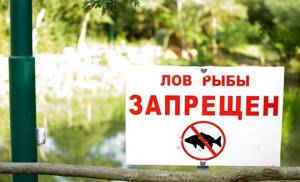
Important! Fishing without permits is punishable by law and imposes a significant fine on the fisherman.
Fishing with illegal tools, nets, slings and spears, even entails criminal prosecution with substantial compensation for the damage caused to nature. There is a universal ban on fishing during the spawning period and near wintering pits. A sterlet caught in the bycatch must be carefully removed from the hook and released back into the reservoir, because only by following the rules and caring for this rare fish can we revive the former population of sturgeon, giving hope to future generations of fishermen to experience the incredible pleasure of catching the legendary trophy.
Using donkey
Avid fishermen consider fishing for sterlet using bottom gear or a casting hook the most interesting way. This can easily be explained by the intention to become the owner of the long-awaited loot as quickly as possible.
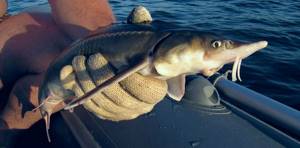
At the very beginning of summer, fishing for sterlet using a donkey with rubber shock absorbers can be very successful. This method is highly effective because it makes it possible to use up to five leashes without scaring off any fish.
During this period of time, the sterlet comes to feed closer to the shore, so this method of fishing gives the largest catch.
Gear requirements
For bottom tackle, an inertial reel is used, with which you can make a good long cast, prevent snagging, and make fishing easier.
Sterlet is not a shy fish, so the color of the fishing line can be any.
This type of fish is not often taken off the hook, and therefore the quality and strength of the fishing line may not be given much importance. You can use a fairly thin fishing line, as long as the leash is thicker. Usually they take a fishing line with a thickness of about 0.35 millimeters.
The leash is made from twenty to forty millimeters long; it can be permanent or removable. The removable leash has greater functionality in use; it is easier to replace and more convenient to use.
You can store such leashes without any problems.
Sinkers are selected depending on how cluttered the river bottom is and how strong the current is. The optimal weight and shape of the sinker is selected only through experimentation.
For the long mouth of this fish, a number five or seven hook is suitable. One fisherman is allowed to use no more than five hooks.
Bait
Earthworms or red dung worms, bloodworms, maggots, and small butterflies are used as bait. The size of the worms should be large or medium. Many fishermen pierce the worm several times when attaching it to ensure more stable engagement.
When preparing the bait, you should remember that sterlet prefers baits of animal origin.
However, it is permissible to combine them with herbal ones. Such a combined bait should emit a pungent aroma, for example, the smell of decaying fish or garlic. It must be lowered to the very bottom of the river.
Small bait may go unnoticed by the sterlet. Its mouth is large, so it can easily swallow bulky bait.
You cannot use hard bait; the fish will immediately spit it out, mistaking it for a stone.
How to catch
Taking into account the fact that this fish is a schooling fish, the main point when catching it is the choice of place. We need to find where she can feed most often.
Sterlet bites better in the dark, the bite is quite quiet, but reliable.
Using a spinning rod
With the onset of autumn cold, the water level decreases and flocks of sterlet move to more places on the river, where the depth is much greater.
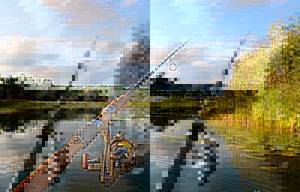
First of all, various depressions, holes, and river confluences are fished, for which it is very convenient to use a sports spinning rod.
With the first frost, fish can go to more than twenty meters depth. This, of course, creates some difficulties for anglers.
Gear selection
To catch sterlet, medium and high-power spinning rods are used, to which a good inertial reel is attached. With their help, you can cast the lure far, avoiding snags, and it is also easier to catch the prey that has bitten. A fishing line can be of any color with a diameter of 0.25 to 0.35 millimeters, a leash with a diameter of 0.2 millimeters.
The sinker should be selected experimentally, depending on how cluttered the bottom is and what the power of the current is. The hook must have a long shank. Such a hook is easier to get out of the fleshy mouth of the fish. Use hooks number five, six, seven. Sometimes the fish gets hooked on the body or on the edge of the lip.
Bait
Along with traditional types of bait, some fishermen use silicone imitation eggs. Attaching real caviar to a hook is somewhat difficult, but the silicone attaches quite well. A good reaction of sterlet to red colors was noted. In this case, it is necessary to use a fragrance that smells like caviar.

